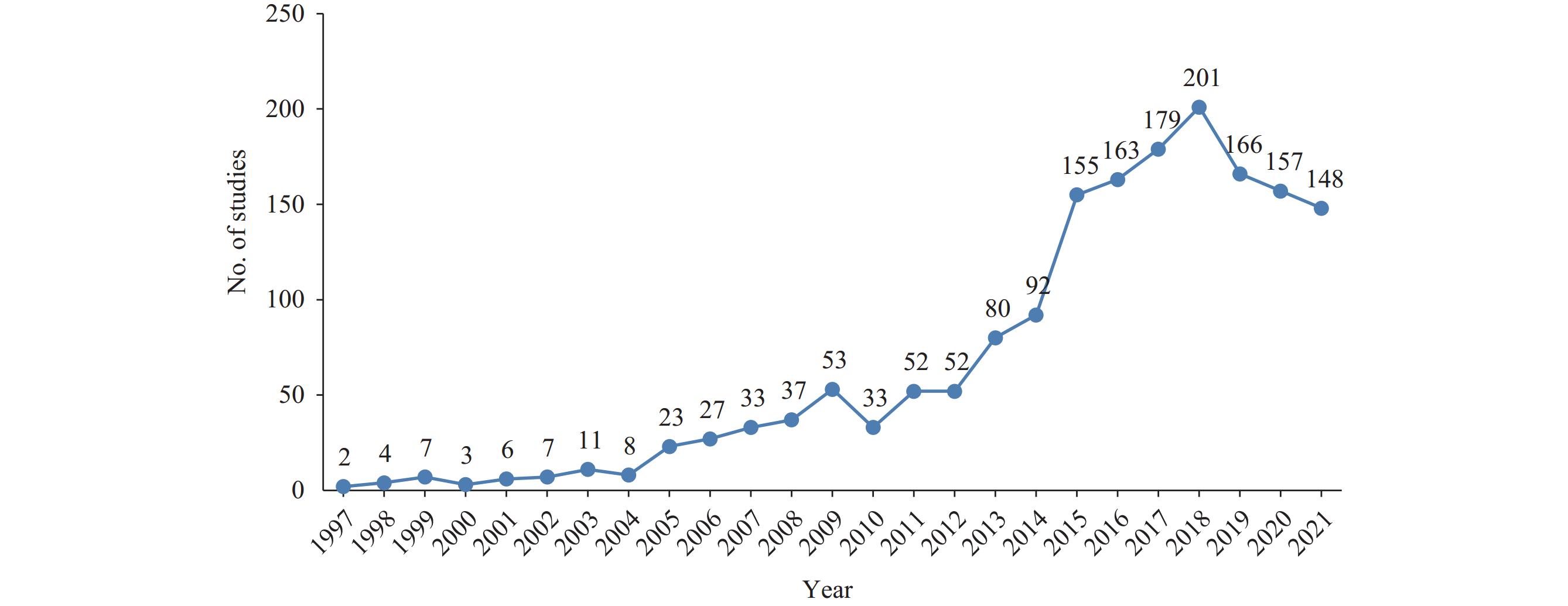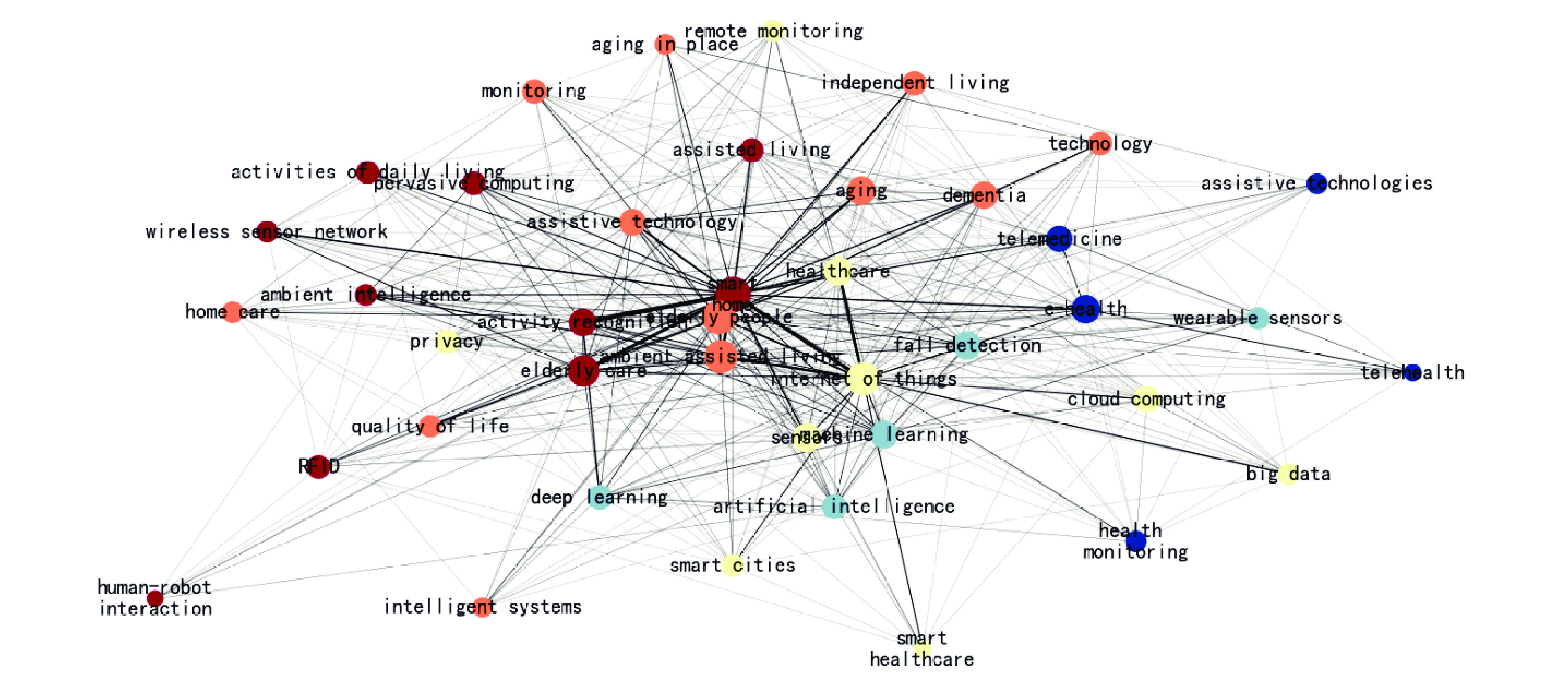-
Population aging has become a significant global concern due to increased life expectancy and reduced fertility rates. According to United Nations data (1), the number of individuals aged 65 and above worldwide reached 727 million in 2020. Over the next three decades, this number is expected to more than double, surpassing 1.5 billion in 2050. The proportion of elderly individuals in the global population is projected to increase from 9.3% in 2020 to 16.0% in 2050. By mid-century, one in six individuals worldwide will be 65 years or older. This demographic shift necessitates well-planned healthcare and social systems to support the well-being of the elderly as they age. The advancement of technologies such as the Internet of Things, cloud computing, and blockchain has given rise to smart elderly care, which can provide personalized health services through the integration of big data and a one-health approach. Smart elderly care is crucial for promoting active and healthy aging (2). It relies on foundational technologies like the Internet of Things, big data, artificial intelligence, and blockchain, with smart communities, cities, and societies serving as support. Third-party professional service organizations play a crucial role in ensuring the effectiveness of smart elderly care. By integrating resources and employing unified resource scheduling, this new model of care enables efficient data interconnection (3). To examine the key areas of research in smart elderly care, this paper utilizes bibliometric analysis.
This study focuses on the interdisciplinary field of smart elderly care, which encompasses disciplines such as sociology, medicine, computer science, electronic information engineering, management, economics, and law. To conduct a bibliometric analysis, we utilized the Web of Science (WOS) Core Collection, a comprehensive database covering these disciplines (the time range of literature included in this database has been from 1900 onwards). A search formula was employed: “TS=(smart elderly care) OR TS=(smart care for elderly) OR TS=(smart care for aged) OR TS=(smart senior care) OR TS=(intelligent old-age care) OR TS=(intelligent elderly care) OR TS=(intelligent senior care) OR TS=(intelligent elderly support).” This search was conducted from January 1, 1900, to October 31, 2021, and resulted in a total of 2,141 retrieved papers. The literature was then screened by reviewing titles, keywords, and abstracts. After removing duplicates, news articles, reviews, and publications unrelated to the research theme “smart elderly care,” we included a final set of 1,699 valid literature for analysis.
This study utilizes bibliometrics to analyze the literature and provide insights into the current research status in the field of smart elderly care. The publication date, country, and frequently occurring keywords in the literature are sorted and analyzed using SATI (version 3.2; Qiyuan Liu & Ying Ye, Hangzhou, China), COOC (version 9.9; XueShuDianDi, Beijing, China), and Excel software (version 2019; Microsoft, Washington State, USA). Specifically, SATI software is used to extract and analyze information such as publication time, country, and keywords. Excel software is employed for data analysis, while COOC is utilized to generate knowledge maps.
A total of 1,699 valid documents were analyzed to examine the temporal distribution of English literature on smart elderly care, as depicted in Figure 1. Based on the analysis, the research on smart elderly care can be divided into two stages. The first stage covers the period from 1997 to 2014, during which less than 100 articles were published annually. Subsequently, from 2015 to 2021, the number of articles published increased significantly, with over 100 articles per year. In 2018, the number peaked at 201 and then started fluctuating. A total of 99 countries worldwide have conducted research on smart elderly care, with China ranking first. The top 10 countries are presented in Table 1.
No. Countries Number of papers 1 China 299 2 USA 225 3 England 118 4 Japan 110 5 Spain 103 6 Italy 97 7 India 75 8 Germany 68 9 Australia 64 10 France 49 Table 1. Top 10 countries with smart elderly care research 1900–2021.
The SATI software was utilized to extract and clean keywords. The cleaning principles involved merging synonyms, such as replacing “senior citizens,” “older adults,” “older people,” “aged,” and “elderly” with “elderly people.” Additionally, incomplete concept expressions were supplemented, for example, “AAL” was replaced with “Ambient Assisted Living.” Abstract words, such as “overview,” were deleted. Following these principles, a total of 4,058 keywords were extracted from 2,141 literature. Table 2 presents the high-frequency keywords (frequencies greater than 15). Co-occurrence analysis was performed on these high-frequency keywords, resulting in the co-occurrence graph displayed in Figure 2. The analysis identified five dimensions, each represented by a different color in Figure 2.
No. Keywords Frequency No. Keywords Frequency 1 Smart home 239 22 Technology 26 2 Elderly people 162 23 RFID 23 3 Internet of things 156 24 Monitoring 22 4 Ambient assisted living 107 25 Home care 21 5 Elderly care 91 26 Aging in place 21 6 Activity recognition 80 27 Wearable sensors 19 7 Healthcare 69 28 Health monitoring 19 8 Fall detection 63 29 Quality of life 19 9 Machine learning 55 30 Independent living 19 10 e-health 46 31 Remote monitoring 18 11 Assistive technology 43 32 Cloud computing 18 12 Telemedicine 42 33 Smart healthcare 17 13 Ambient intelligence 38 34 Assistive technologies 17 14 Aging 38 35 Activities of daily living 17 15 Dementia 35 36 Big data 17 16 Pervasive computing 34 37 Smart cities 17 17 Artificial intelligence 32 38 Human-robot interaction 17 18 Wireless sensor network 31 39 Privacy 16 19 Deep learning 31 40 Telehealth 16 20 Sensors 30 41 Intelligent systems 15 21 Assisted living 28 Table 2. High-frequency keywords of smart elderly care research (frequency ≥15)
-
This study identified five main research areas within the field of smart elderly care. The first area focuses on smart home technologies, which aim to enhance the quality of life for the elderly. The keywords associated with this dimension include smart home, ambient assisted living, elderly care, activity recognition, ambient intelligence, pervasive computing, wireless sensor network, assisted living, Radio Frequency Identification (RFID), activities of daily living, and human-robot interaction. These keywords highlight the importance of creating a smart living environment for the elderly, utilizing various technologies to improve their overall well-being and daily functioning.
In a related study, Calatrava-Nicolás, et al. (4) developed a robotic-based health monitoring and guidance system for the elderly. This system incorporates intelligent sensors, actuators, and a robot platform to interact with the users, providing environmental intelligence. By leveraging robotics and artificial intelligence, this system addresses the mental health needs of the elderly, assisting them in their daily activities. The second dimension of our study centers around the concept of “aging in place.” It involves the use of intelligent devices to support elderly individuals in remaining in their familiar living environment during their later years. The key focus areas include elderly people, assistive technology, aging, dementia, technology, monitoring, home care, aging in place, independent living, and quality of life. These keywords highlight our emphasis on promoting independent living and enhancing the quality of life for the elderly through the use of assistive technology.
According to the World Health Organization (WHO) (5), aging in place allows elderly individuals to stay in their familiar living environment, maximize their independence, and ensure a good quality of life during their later years. This approach also helps to reduce the economic burden associated with other forms of elderly support.
The third dimension of this study examines the utilization of information technology in the field of elderly medical care. The dimension includes 9 key terms: internet of things, healthcare, sensors, cloud computing, remote monitoring, smart cities, big data, smart healthcare, and privacy. Specifically, within the context of smart cities, these key terms primarily focus on the application of information technology such as internet of things, cloud computing, and big data in elderly healthcare, with an emphasis on privacy concerns. Kor AL, et al. (6) have developed the SMART-Item system, which leverages cloud computing and internet of things technologies. This system provides intelligent medical and nursing care for the elderly, encompassing the entire data lifecycle, including acquisition, transmission, integration, processing, computation, visualization, intelligence analysis, data sharing, and storage. The SMART-Item system offers a comprehensive integrated intelligent service.
The fourth dimension of our study focuses on fall monitoring, specifically exploring the following six key areas: fall detection, machine learning, artificial intelligence, deep learning, wearable sensors, and intelligent systems. These keywords are essential in understanding the application of various artificial intelligence technologies in monitoring falls among the elderly population. Koshmak et al. (7) conducted research utilizing cell phone technology combined with physiological data detection in novice skaters to collect fall data. The study’s findings indicated that the online algorithm exhibited a specificity of 90%, a sensitivity of 100%, and an accuracy of 94%. In a separate study, Shiba et al. (8) investigated a fall detection system based on microwave Doppler sensors. The system successfully detected multiple fall scenarios, including tripping, slipping, coma, walking, bending, sitting, and standing. The accuracy, positive predictive value, and negative predictive value of the system were determined to be 0.95, 0.94, and 0.97, respectively.
The fifth dimension of our study focuses on health monitoring, encompassing the following key terms: e-health, telemedicine, health monitoring, assistive technologies, and telehealth. The aim is to explore the application of telemedicine technologies in monitoring the health of older adults. One study conducted by DanaKai Bradford (9) examined the Smarter Safer Homes project, which aims to develop a platform for monitoring the safety, physical health, and brain function of the elderly. This platform utilizes sensory information from the environment, cognition, physical activity, and physiology to assess the health status of older adults and determine the need for medical intervention. Another study by Larkai DL, et al. (10) focused on remote heart rate monitors as part of a personal emergency response system. These monitors can detect abnormal heart rates in real-time and promptly notify authorized clinicians in emergency situations.
The articles analyzed were only retrieved from the WOS. Research published in other databases was not considered, and the majority of the articles were in English. This may result in the omission of significant research conducted in other languages. However, WOS primarily focuses on academic papers in the interdisciplinary fields of sociology and medicine, which still allows for a comprehensive understanding of the current hot topics in global smart elderly care research.
The aging population is a significant social and economic challenge worldwide. It is important to address this issue promptly by leveraging technologies such as the internet, big data, and cloud computing to develop smart elderly care solutions. Despite the growing number of publications on this topic, there has been no comprehensive review of the research landscape and its impact on global smart elderly care. Therefore, this study aims to investigate global research in this field and identifies five key dimensions. Moving forward, there is a need for more in-depth research in smart elderly care that focuses on user-friendly aspects such as high accuracy, precision, ease of use, and ethical considerations to ensure the well-being of seniors. It is noteworthy that among the top 10 countries with the most publications, China (ranking first) is the only developing country. Thus, we encourage scholars from developing countries to actively participate in the discourse on smart elderly care and healthy aging.
-
No conflicts of interest.
HTML
| Citation: |




 Download:
Download:





